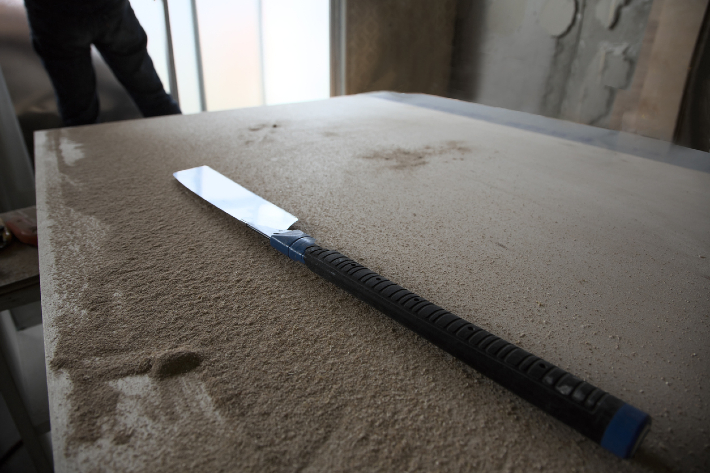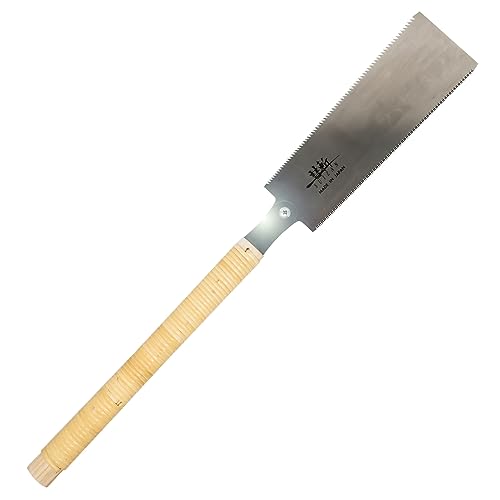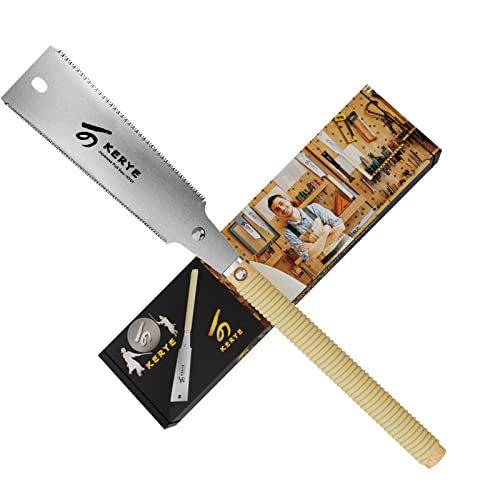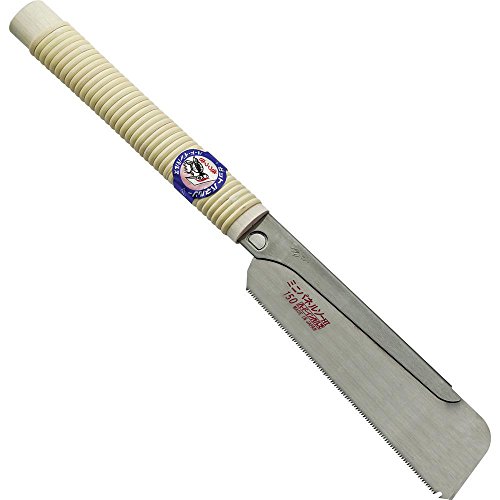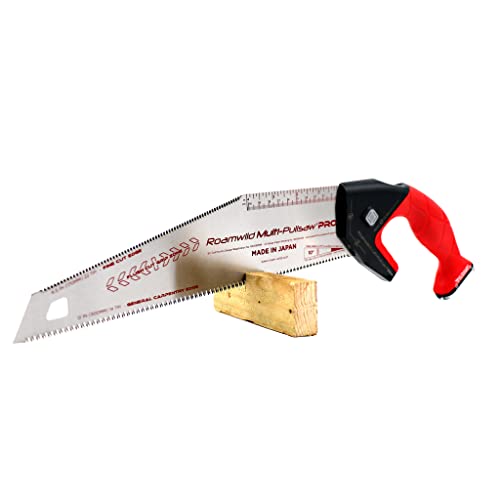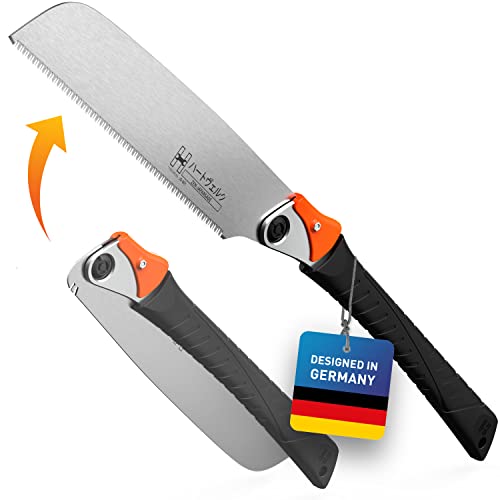- StoreProjects
- Free Plans and Projects
- Furniture Projects
- Jigs And Fixtures Projects
- Shop Projects
- SketchUp Models
- Shop Storage
- Workbenches
- Free Woodworking Downloads From Lee Valley
TechniquesToolsVideos- Premium Streaming Video Site
- Experts Guide to Gluing & Clamping Wood
- Mastering Built-In Furniture
- Simple Live-Edge Slab Table
- CNC – Designed for Woodworkers
- Milling Your Own Lumber
- Advanced Bandsaw Techniques
- I Can Do That! – Simple Woodworking Projects
- Woodwright’s Shop with Roy Underhill
- Tricks of the Trade
BlogOur content is meticulously curated through independent research, testing, reviews, and AI-driven recommendations, all designed to present you with the finest product choices. When you make a purchase through our links, it could result in us earning a commission.5 Best Japanese Pull Saws for Clean, Accurate Cuts
Last updated: 17 Jun 2024
From the first cut, you’ll notice how easier a Japanese pull saw is to handle—even over the use of a power saw
Imagine cutting through wood easily, leaving behind a smooth, clean edge every time. That’s exactly what a quality Japanese pull saw offers. Unlike traditional saws that cut on the push stroke, Japanese pull saws cut on the pull stroke. This design makes your cuts cleaner and reduces the effort needed.
Now, which saw is the best Japanese pull saw? Let me introduce you to the #1 saw on our list: the SUIZAN Japanese Pull Saw. With a 4.8-star rating, it's popular for several reasons. The saw's sharp, durable blade can tackle many types of wood, from soft pine to hard oak. But what really sets it apart is its versatility. Whether you're doing fine woodworking or outdoor carpentry, this saw will make your life easier.
Our Top Picks
- Best Overall: SUIZAN Japanese Pull Saw Shop Now ➔
- Budget-Friendly Pick: KERYE Japanese Pull Saw Shop Now ➔
- Best Precision: Rockler Japanese Mini Dozuki Panel Saw Shop Now ➔
- Most Innovative: Roamwild Multi-Pullsaw PRO Shop Now ➔
- Best Kataba: HARDTWERK Zen Japanese Pull Saw Shop Now ➔
View all Contents- Choosing the Best Japanese Pull Saw: A User's Guide
- Japanese Pull Saws Make Woodworking Easier, More Precise, and Less Tiring
- 7 Advantages of Japanese Pull Saws Over Other Saws
- What Woodworking Projects Are Japanese Pull Saws Best For?
- 3 Types of Japanese Pull Saws
- What You Need to Consider When Choosing the Best Japanese Pull Saw
- 7 Tips for Using a Japanese Pull Saw
- Invest in a Saw With a Proven Track Record of Success
- Best Japanese Pull Saw FAQs
- Related Reviews
5 Best Japanese Pull Saws of 2024
Best Overall
Ever found yourself mid-project fighting with your saw and thinking, “There has to be a better way?” When you buy a saw with a 4.8-star rating, it means it has a strong reputation for quality and performance. The SUIZAN Japanese Pull Saw is made of Japanese steel with teeth for cross-cutting and rip-cutting on either side of the blade.
Moreover, this best-selling saw has a length of 24 inches and is perfect for making fine cuts on wood. With a thickness of 0.2 inches, you can achieve the narrowest kerfs. You can also conveniently replace the blade once worn by simply removing the old blade. To over 500, 000 happy customers, this Ryoba saw is the best Japanese Pull Saw on the market today. Reigning with its steel quality, we ranked it the best overall on our list.
Pros
- 4.8-star rating
- Cuts wood like butter
- Long anti-skid handle
- High quality from a trustworthy brand
Cons
- Slightly more expensive
Budget-Friendly Pick
Want an affordable saw? Meet our runner-up. The KERYE Japanese Pull Saw is a remarkable saw for beginners at a budget-friendly price. Its 9.5-inch blade provides a larger working area, making it great for different woodworking projects. Additionally, it’s made from SK5 high carbon steel, ensuring durability and sharpness, while the beech and rattan handle provides a lightweight and ergonomic grip.
With its 3-sided grinding teeth, the saw guarantees a long lifespan and exceptional wear resistance. Further, the 2-in-1 design has both 10 TPI and 17 TPI teeth, catering to rough and detailed cuts. For those who need a versatile and affordable option, this saw could be the best Japanese pull saw for budget-conscious woodworkers.
Pros
- Great for beginners
- 4.6-star rating (1K+ bought in past month)
- 9.5-inch length allows cutting thick pieces
- 3-sided grinding teeth are sharp and durable
Cons
- Budget-friendly option
Best Precision
The Rockler Japanese Mini Saw has a 4.7-star rating from just under 700 customers (as of this writing). Our runner-up (above) has nearly 3,000 ratings. So, regarding quality, this saw is on par with our runner-up. Let’s get into the details about who this saw is best for and why.
First off, the 150mm blade is great for cutting small wooden designs where large saws struggle. It’s made from high-speed steel, offering thin and precise cuts every time. Additionally, the metal backbone (Dozuki) adds extra stiffness to the blade. Plus, the “Woodpecker” hook tooth at the blade tip helps you start your first cut easily. So, whether you’re scoring and cutting panels or veneer, this saw is highly recommended. For those looking for a small saw with precision, this could be the best Japanese pull saw for you.
Pros
- 4.7-star rating from happy customers
- Ultra-precision cutting of small wooden parts
- Dozuki style enhances accuracy
- Trustworthy, reputable brand
Cons
- The thin blade, while precise, requires careful handling
Most Innovative
The Roamwild Multi-Pullsaw PRO is the most innovative saw on our list. With its unique design, the saw boasts two cutting edges: a 12-inch carpentry cutting edge and a 6.5-inch angled fine cutting edge. This versatility makes it perfect for various tasks, from general carpentry to intricate fine cuts. Moreover, the blade’s ultra-thin, pulse-hardened steel, with 3 diamond-ground cutting edges, ensures clean cuts every time.
Furthermore, the saw’s ergonomic handle, featuring a soft touch grip and deliberate thumb groove, provides maximum control and comfort. This design, combined with the saw’s ability to cut with a narrow kerf to 0.6mm accuracy, makes it ideal for precise work. As a bonus, the handle also includes a nail puller and tack hammer, adding to its multifunctionality. For woodworkers seeking versatility and a comfortable grip, this tool could be the best Japanese pull saw.
Pros
- 4.5-star rating (as of this writing)
- Safety-enhanced, ergonomic handle
- Intuitive trapezoid-like blades design
- Nail-puller and hammer under the handle
Cons
- Some customers noted the handle’s locking mechanism could be more secure
Best Kataba
The HARDTWERK Zen Japanese Pull Saw has a 4.3-star rating from 3,500+ reviews. The saw is made of SK4 hardened carbon steel in Kataba style. Kataba has only one sharp edge and no stabilizing back, so it’s best suited for deeper cuts.
Moreover, the handle is made of hard rubber to absorb the vibration caused by the edges while cutting through the wood. Ultimately, it delivers a sharp-cutting experience with super fine teeth per inch. As a bonus, the chrome plating makes it highly resistant to rusting and scratching. With a 6-inch blade that fits perfectly in the handle when folding, this is the best Japanese pull saw if you’re looking for a foldable design.
Pros
- Foldable design
- SK4 carbon steel blade
- Ergonomic shock absorbent handle
- Western design
Cons
- Not suitable for hardwood; thin blade
Choosing the Best Japanese Pull Saw: A User's Guide
Japanese Pull Saws Make Woodworking Easier, More Precise, and Less Tiring
Imagine spending hours on a project, only to end up with rough, uneven cuts and aching arms. It’s disheartening, right? The strain from pushing through wood with a conventional saw can make even the most passionate woodworker frustrated.
Using the best Japanese pull saw—the SUIZAN Japanese Pull Saw—you’ll notice how smoothly it glides through wood. The teeth are designed to minimize friction and binding, meaning you’ll spend less time struggling and more time creating. Additionally, the ergonomic handle design reduces hand fatigue, so you can work longer without discomfort.
7 Advantages of Japanese Pull Saws Over Other Saws
- Precision cuts: pulling to cut gives you better control, making your cuts more accurate and cleaner.
- Less waste: thinner blades mean finer cuts with less wood waste, perfect for detailed work.
- Easy on the arms: cutting on the pull stroke requires less effort, reducing fatigue during long projects.
- Multiple uses: different types for different jobs—crosscuts, rip cuts, dovetails—you name it.
- Smooth finishes: sharp teeth made from Japanese steel mean smoother cuts with less tearing.
- Light and handy: lightweight and compact, the best Japanese pull saw is easy to handle, even in tight spaces.
- Simple upkeep: replaceable blades mean no sharpening hassle—just swap out for a new one.
What Woodworking Projects Are Japanese Pull Saws Best For?
Japanese pull saws are awesome for precise, clean cuts. Here are some top projects where they shine:
1. Fine Joinery
Dovetails & mortise joints: perfect for tight, intricate joints in drawers and furniture.
2. Furniture Making
Legs & shelves: ideal for cutting table and chair legs, plus making cabinets and shelves.
3. Box Making
Jewelry & toolboxes: great for small, detailed boxes with precise cuts.
4. Instrument Making
Guitars & violins: perfect for the delicate work of crafting musical instruments.
5. Decorative Work
Inlay & frames: excellent for intricate designs and custom picture frames.
6. Restoration
Furniture repair & trim: ideal for careful, precise restoration work.
7. Model Building
Architectural & ship models: perfect for detailed hobby projects.
8. DIY Projects
Birdhouses & toys: great for simple, fun DIY projects with clean edges.
3 Types of Japanese Pull Saws
- Ryoba: a double-edged saw with rip teeth on one side and crosscut teeth on the other. Perfect for versatility.
- Dozuki: has a spine for extra rigidity, making it ideal for fine joinery and precise cuts.
- Kataba: a single-edged saw without a spine, allowing for deeper cuts.
What You Need to Consider When Choosing the Best Japanese Pull Saw
1. Blade Quality
The blade is the heart of your saw. Japanese white steel or blue steel are excellent choices. Trust me, investing in a good blade can save you a lot of frustration down the line when you’re searching for the best Japanese pull saw. Personally, I’ve found that a high-quality blade makes all the difference.
2. Tooth Configuration
Consider what kind of work you’ll be doing:
- Rip cuts: teeth are larger and more widely spaced.
- Crosscuts: smaller, more closely spaced teeth for cleaner cuts across the grain.
- Combination: if you need versatility, a Ryoba saw with both rip and crosscut teeth will be your best bet. I remember the first time I used a Ryoba saw, and it was like a revelation—so light and easy to use. This type is definitely a top contender for the best Japanese pull saw.
3. Handle Comfort
You’ll be holding the handle a lot, so it needs to be comfortable. Traditional Japanese pull saws often have wooden handles wrapped in rattan or rubber for grip. Personally, I find the rattan wrap comfortable during long sessions.
4. Blade Thickness and Flexibility
Thinner blades allow for more precise cuts and less wood waste. However, they can be more fragile. Think about the type of projects you’ll be working on. For intricate joinery, a thin blade is ideal. For general woodworking, a slightly thicker blade is more durable. So, if you’re aiming to get the best Japanese pull saw, consider how blade thickness impacts your specific needs.
5. Replaceable Blades
Some saws come with replaceable blades, which can be a cost-effective option in the long run. If you’re new to using Japanese saws, starting with a model that allows for blade replacement is a good idea. It’s a feature that I think is essential for anyone looking for the best Japanese pull saw, especially if you’re just getting started.
Moreover, to make your life even easier, consider complementing your purchase with a quality sanding block and an affordable leather tool belt.
7 Tips for Using a Japanese Pull Saw
- Use light pressure: let the saw do the work. Apply light pressure and pull smoothly to avoid bending the blade.
- Start with a guide cut: make a shallow cut to guide your saw, ensuring a straight and accurate final cut.
- Keep the blade straight: align your wrist and forearm to avoid twists.
- Choose the best Japanese pull saw: a Kataba for deep cuts, a Dozuki for fine cuts, and a Ryoba for versatility.
- Use a stable work surface: clamp your workpiece to prevent movement while cutting.
- Practice proper posture: stand comfortably for smooth, controlled cuts.
- Maintain your saw: keep the blade clean and sharp for best performance.
Invest in a Saw With a Proven Track Record of Success
Imagine you’re working on a detailed piece—a delicate dovetail joint. With a traditional saw, you’d be bracing yourself for the struggle, hoping your saw won’t veer off course. And the fatigue? It’s a given.
The SUIZAN Japanese Pull Saw flips the script. You’ll notice how much lighter and easier it is to handle right from the first cut. It’s not just about less effort—it’s about more control and precision, too. Think razor-sharp edges and smooth finishes. Plus, the double-edge design means you can switch between rip cuts and cross cuts without changing tools. With the best Japanese pull saw, you’ll get versatility and efficiency rolled into one.
Don’t Just Take Our Word for It
Over 500,000 saws sold worldwide and a near-perfect rating from thousands of customers can’t be wrong. Woodworkers from all walks of life insist the SUIZAN saw is the best Japanese pull saw on the market today. A happy customer wrote the following review:
“Using a high-quality Japanese-style pull saw like this one [SUIZAN Japanese Pull Saw] will make you wonder why our standard here in the United States is for saws to cut on the push instead. I have had this pull saw for more than a year now, and it is my go-to tool for making accurate cuts when woodworking—even over the use of my power saw options.” -Michael
Best Japanese Pull Saw FAQs
How can the SUIZAN Japanese Pull Saw simplify the process of building a table?
The SUIZAN saw simplifies table building by offering exceptional precision with its double-edged blade for both rip and cross cuts. Its lightweight design and pull-action reduce fatigue, making it easier to handle long cutting sessions. Further, the razor-sharp Japanese steel blade ensures clean, accurate cuts, and its high quality means you'll get consistent results every time. The saw is a strong contender as the best Japanese pull saw on the market today.
When should I choose the SUIZAN Japanese Pull Saw over the KERYE saw?
The KERYE saw is considered the best Japanese pull saw for beginners and those on a budget. It has a 4.6-star rating and an affordable price tag.
Does the SUIZAN Japanese Pull Saw make a good gift?
This depends on who you're gifting the saw to. When giving a gift, you want a highly rated product. SUIZAN's saw has a 4.8-star rating, but you also want to make sure the person you're giving the saw to will use or appreciate the saw. In my opinion, this is the best Japanese pull saw on our list.
What is the most affordable Japanese pull saw?
The most affordable saw isn't always the best saw. Determine your needs. What will you be using the saw for? As of this writing, the KERYE Japanese Pull Saw is the cheapest saw on our list. It has a 4.6-star rating and flies off the shelves each month. So, if you're looking for value for money, this could be the best Japanese pull saw for you.
Is SUIZAN a trustworthy brand?
If you're not familiar with the brand, a good indication of quality is customer reviews and ratings. The SUIZAN Japanese Pull Saw has a 4.8-star rating from over 9,000 happy customers. That's the highest rating I've seen.
Article Contributors
Read More About Popular Woodworking Reviews Team HereThe Popular Woodworking Review Team’s product reviews and comprehensive guides are here to help you select the best gear and tools to efficiently complete top-quality woodworking projects.
Popular Woodworking is reader-supported: When you buy through links on our site, we may earn an affiliate commission. Artificial Intelligence (large language models) may have been used in the research and creation of the content.
Questions about product testing or a specific articles should be sent to aimperiapt@gmail.com
Related Reviews
5 Best Sanding Blocks for Perfectly Smooth Finishes 5 Best Leather Tool Belts for Easy Access to Your Tools 5 Best Oscillating Saws for Easy, Clean Cuts 5 Best Compact Routers to Easily Shape and Cut Wood 5 Best Rubber Mallets That Offer a Comfortable Grip 5 Best Screw Guns for Every Budget—DIYer to Professional

